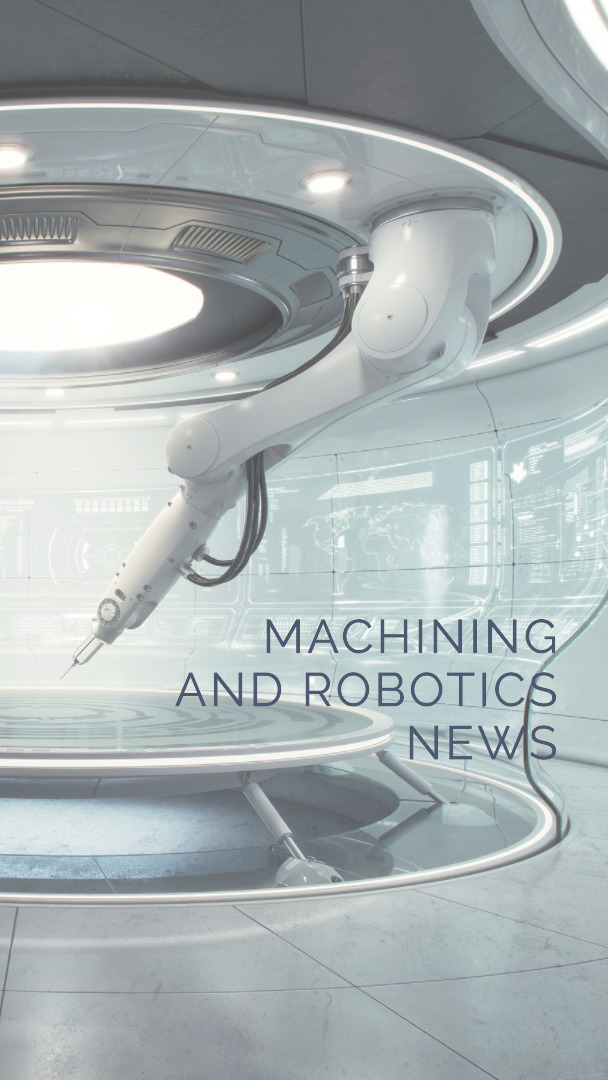The world of machining and robotics has been rapidly advancing, revolutionizing industries and transforming the way we live and work. In this article, we will delve into some of the most compelling news stories and developments that are shaping the future of this exciting field.
- 1. AI and Machine Learning Transforming Manufacturing Processes
- 2. Collaborative Robots Revolutionizing Industrial Automation
- 3. Additive Manufacturing Accelerating Innovation
- 4. Robotics in Healthcare Improving Patient Care
- 5. Automation in Agriculture Enhancing Efficiency
- 6. Machine Vision Systems for Quality Control
- 7. Advancements in Industrial 5G Connectivity
- 8. Cybersecurity Challenges in the Era of IoT
- 9. Human-Robot Collaboration in Manufacturing
- 10. The Rise of Edge Computing in Industrial Automation
1. AI and Machine Learning Transforming Manufacturing Processes
Artificial Intelligence (AI) and machine learning are playing a pivotal role in reshaping manufacturing processes. Intelligent systems equipped with AI capabilities are enabling real-time data analysis, predictive maintenance, and efficient production planning. These technologies are optimizing workflows, reducing downtime, and enhancing overall productivity.
2. Collaborative Robots Revolutionizing Industrial Automation
Collaborative robots, also known as cobots, are increasingly being integrated into industrial automation processes. These robots are designed to work alongside humans, assisting them with repetitive tasks, improving safety, and increasing efficiency. Cobots are equipped with advanced sensors and software that enable them to interact and collaborate with humans in a shared workspace.
3. Additive Manufacturing Accelerating Innovation
Additive manufacturing, commonly known as 3D printing, is revolutionizing the way products are designed and manufactured. This technology allows for the creation of complex and customized parts that were previously impossible to produce. With additive manufacturing, companies can reduce costs, increase flexibility, and accelerate innovation by rapidly prototyping and iterating designs.
4. Robotics in Healthcare Improving Patient Care
Robots are finding their way into the healthcare sector, transforming the way patient care is delivered. Surgical robots, for example, are assisting doctors in performing complex surgeries with greater precision and minimal invasiveness. Additionally, robots are being used for patient monitoring, medication dispensing, and rehabilitation, improving overall healthcare outcomes.
5. Automation in Agriculture Enhancing Efficiency
The agricultural industry is witnessing a significant transformation with the integration of automation and robotics. Autonomous tractors equipped with GPS and sensors are optimizing farm operations, reducing manual labor, and improving crop yields. Drones are also being used to monitor crop health, detect pests, and apply targeted treatments, enabling farmers to make data-driven decisions.
6. Machine Vision Systems for Quality Control
Machine vision systems are becoming increasingly important in ensuring product quality and consistency. These systems utilize advanced cameras and image analysis software to inspect and analyze products in real-time. They can identify defects, measure dimensions, and detect inconsistencies, enabling manufacturers to maintain high-quality standards and reduce waste.
7. Advancements in Industrial 5G Connectivity
Industrial 5G connectivity is set to revolutionize the world of machining and robotics. With ultra-low latency and high bandwidth, 5G networks will enable real-time communication between machines, robots, and systems. This technology will enhance automation, enable remote monitoring and control, and pave the way for the implementation of smart factories.
8. Cybersecurity Challenges in the Era of IoT
As the number of interconnected devices continues to rise, the need for robust cybersecurity measures becomes paramount. The Internet of Things (IoT) in machining and robotics brings immense benefits but also exposes vulnerabilities. Safeguarding sensitive data and protecting against cyber threats is crucial to ensure the smooth operation and integrity of these interconnected systems.
9. Human-Robot Collaboration in Manufacturing
The concept of human-robot collaboration is gaining traction in manufacturing environments. By allowing humans and robots to work together, productivity and efficiency can be significantly enhanced. Companies are leveraging technologies like force sensing, adaptive grippers, and intuitive programming interfaces to create safe and seamless interactions between humans and robots.
10. The Rise of Edge Computing in Industrial Automation
Edge computing is gaining prominence in industrial automation, enabling real-time data processing and analysis at the edge of the network. With edge computing, machines and robots can make critical decisions instantaneously, reducing reliance on cloud infrastructure and enhancing operational efficiency. This decentralized approach also improves system reliability and resilience.
In conclusion, the world of machining and robotics is undergoing a rapid transformation driven by advancements in AI, machine learning, additive manufacturing, and automation. These technologies are revolutionizing various industries, enhancing productivity, improving patient care, and enabling innovative solutions. As the field continues to evolve, it is essential for businesses and professionals to stay updated with the latest news and developments to leverage the full potential of machining and robotics.
FAQ
Q: How are AI and machine learning transforming manufacturing processes?
A: AI and machine learning are optimizing workflows, reducing downtime, and enhancing overall productivity through real-time data analysis, predictive maintenance, and efficient production planning.
Q: What are collaborative robots and how are they revolutionizing industrial automation?
A: Collaborative robots, or cobots, work alongside humans, assisting them with repetitive tasks, improving safety, and increasing efficiency. They have advanced sensors and software that enable them to interact and collaborate with humans in a shared workspace.
Q: How is additive manufacturing accelerating innovation?
A: Additive manufacturing, or 3D printing, allows for the creation of complex and customized parts, reducing costs, increasing flexibility, and accelerating innovation through rapid prototyping and iterative design.
Q: How are robots improving patient care in healthcare?
A: Robots in healthcare assist doctors in performing complex surgeries with precision and minimal invasiveness. They are also used for patient monitoring, medication dispensing, and rehabilitation, improving overall healthcare outcomes.


One Reply to “Must-read news from the world of machining and robotics”